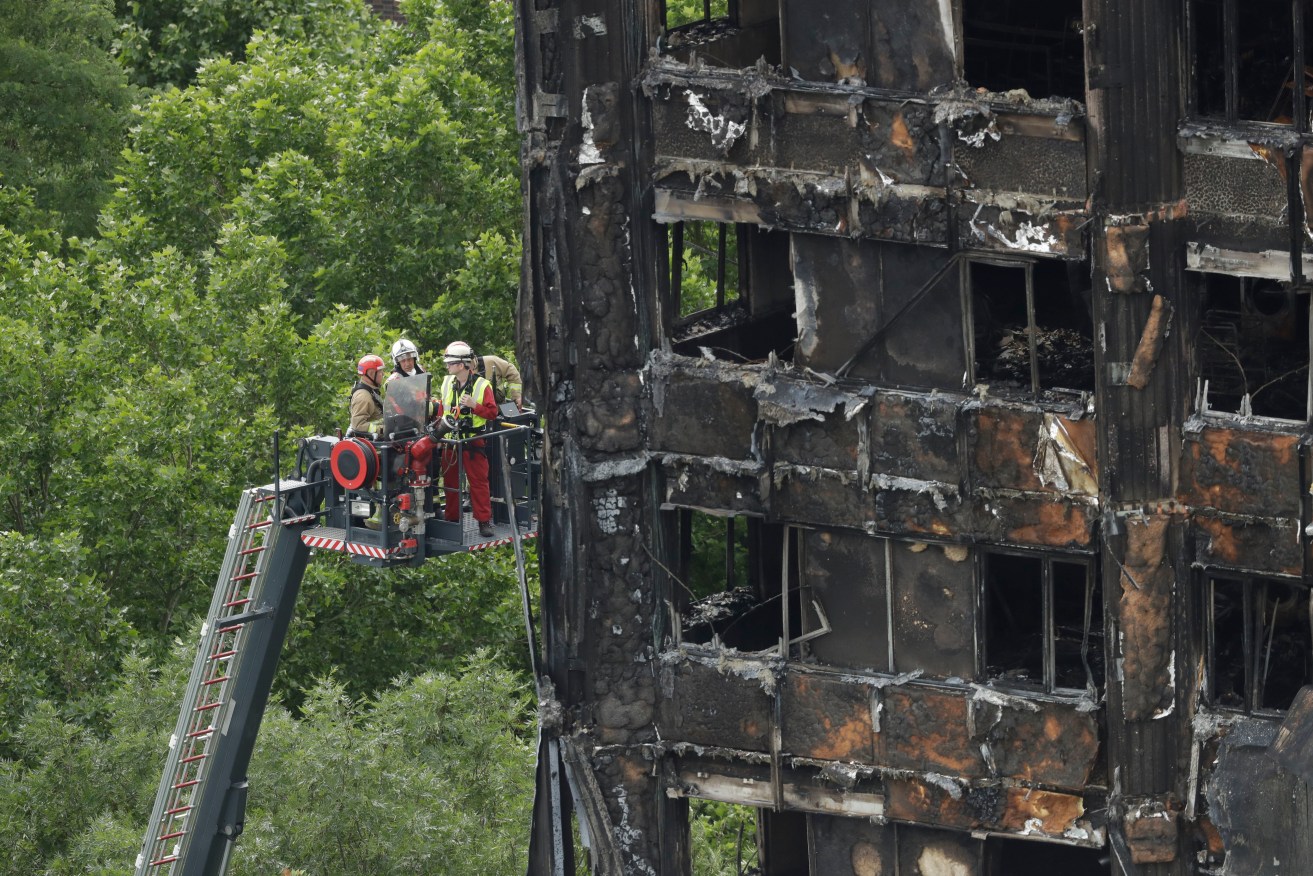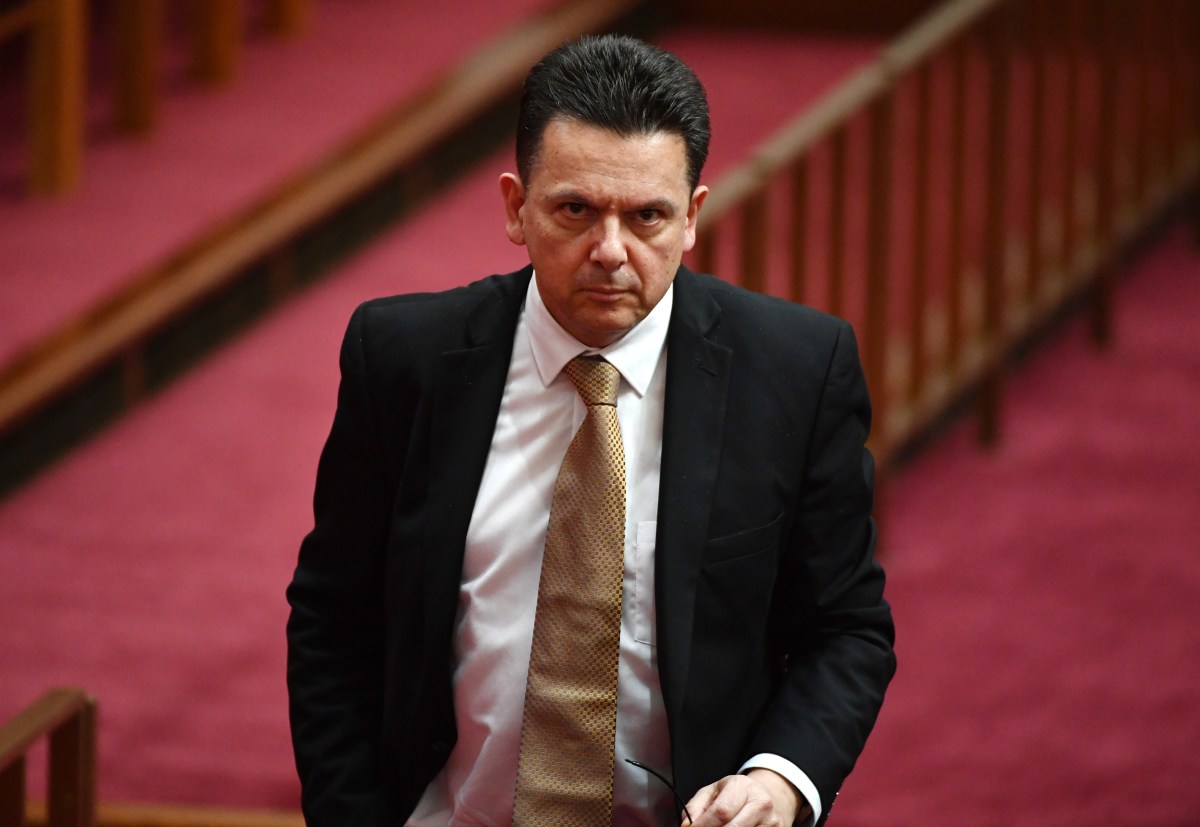“It’s like wrapping a building in petrol”: Xenophon seeks cladding ban
South Australian senator Nick Xenophon will push for new import laws to ban flammable cladding in the wake of London’s deadly Grenfell Tower fire.

London's deadly Grenfell Tower fire has prompted a renewed sense of urgency about the use of cladding in Australia. Photo: Matt Dunham / AP
A Senate inquiry into non-conforming building products has called for an urgent ban on the importation, sale and use of polyethylene core aluminium composite panels.
“The evidence that we’ve heard is that putting this sort of cladding on high rise building is like wrapping a building in petrol,” Senator Xenophon told reporters in Canberra today.
Fire retardant cladding only cost $2-$3 a square metre more, he said.
Xenophon is also calling on state and federal governments to “immediately stop the products being used on building sites and for them to accelerate their audits of buildings and homes to identify the hazardous material”.
Governments across the country are reviewing the safety of major buildings in the wake of the Grenfell blaze.
A spokesperson for Housing Minister John Rau, who is on leave, told InDaily in a statement today that “the State Government has been lobbying the Federal Government for years to tighten border protection against importation of illegal building products”.
However, they added, “as we have seen with asbestos, even a blanket ban on dangerous products does not stop those products from entering Australia”.
“Any ban on polyethylene cladding would need to be supported by appropriate resources from the Federal Government to stop that cladding entering Australia,” the statement said.
InDaily reported yesterday that crossbench MP Duncan McFetridge first wrote to the Weatherill Government two years ago to raise questions after the spread of a 2014 building fire in Melbourne’s Docklands was attributed in part to flammable cladding.
Rau said at the time a full safety audit would involve “destructive testing”, which required a court order. To date, this has not been sought for any city buildings, although 77 have now been earmarked for further consideration.
The Melbourne fire also triggered the Senate inquiry whose report prompted Xenophon’s legislative push.
“Evidence given to the inquiry revealed this material is so hazardous that in the event of a fire, one kilogram of polyethylene will release the same amount of energy as one and a half litres of burning petrol,” he said.
“Just one square metre of polyethylene cladding would contain the equivalent of five litres of petrol… so why would we have our public buildings where Australians work and families live in wrapped in petrol?”
Xenophon said “unless the states act with a greater sense of urgency, the only way is to legislate to stop bringing this potentially lethal product into the country”.
“We cannot, under any circumstances, bear the tragedy that occurred in London… we must prevent any risk of that happening here,” he said.

Nick Xenophon in parliament yesterday. Photo: Mick Tsikas / AAP
But Labor, which dominated the Senate committee, wants the Commonwealth Government to stop buck-passing the issue to the states and territories which have control of building codes.
“The public has a right when they go to sleep at night to know that their families and they are safe in their beds and it’s the government’s responsibility to ensure that’s the case,” committee chairman Chris Ketter said.
The inquiry found building regulations were inadequate and that greater enforcement of existing rules was needed.
It also recommended the federal government establish a national licensing scheme requiring continued professional development for all builders, inspectors, surveyors and project managers.
Prime Minister Malcolm Turnbull has been in discussion with the minister responsible, but stressed it was a state issue.
“Part of the problem has been that cladding that is, if you like, able to be used in one context, in one type of building has been used in buildings where it shouldn’t have been used,” he told Neil Mitchell on 3AW radio.
In a dissenting report, government senators opposed a ban on the cladding while acknowledging there were genuine concerns about its use.
“Banning an individual product will not solve the issue; however consideration should be given to mechanisms to ensure better identification and evidence of suitability for use of these materials along the supply chain,” they said.
The new Royal Adelaide Hospital, which opened this week, is one of the 77 SA buildings earmarked, and questions have been raised about the cladding used in its façade.
But a parliament estimates hearing in July heard the NRAH’s cladding had been identified as “Alpolic wall cladding”, which was not the same as the contentious Haidabond used in the Perth Children’s Hospital.
Metropolitan Fire Service chief officer Greg Crossman told the hearing: “There is a code mark and a certificate of conformity, so we are extremely comfortable that the cladding used on the NRAH building does conform with the national construction codes.”
Queensland’s parliament was told this week that cladding on Brisbane’s Princess Alexandra Hospital would be removed after being deemed more flammable than initially thought.
-with AAP




